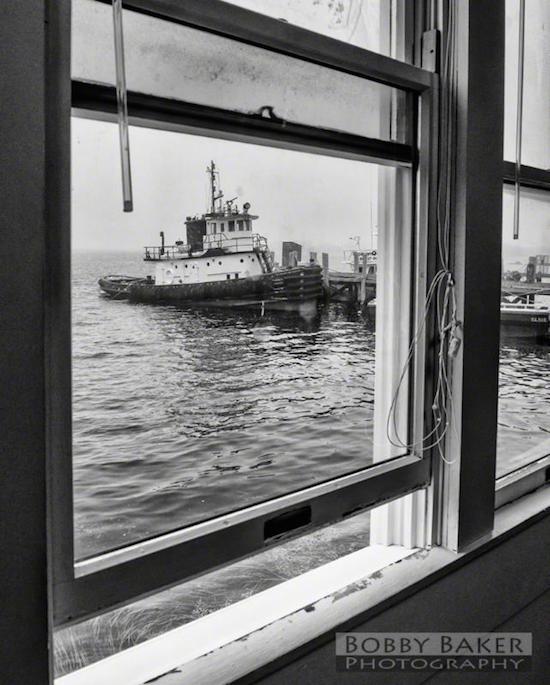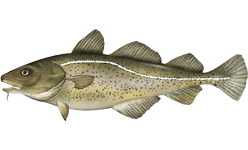
Peter Baker: Illegal N.E. fishing hurts future stocks
"Outside My Window'' (Woods Hole, Mass.), copyright Bobby Baker Photography.
An aromatic site.
This article comes courtesy of ecoRI News
BOSTON
We’ve seen a rash of stories recently on illegal fishing in the Northeast, as enforcement officials take action on unreported catch. Some of the numbers are eye-popping. One bust involved 56,000 pounds of illegally caught and unreported summer flounder, also known as fluke. Another charge alleged 86,000 unreported pounds of the same fish over three years.
Research indicates that those figures are no fluke — pardon the pun. In fact, these recent incidents represent only a small fraction of illegal and unreported catch. Studies show that most illegal fishing in the region involves cheating on rules regarding the amount, type or size of fish allowed to be caught, misreporting in dealer reports, or fishing in places set aside to protect fish habitat and spawning areas. Few people realize the extent of illegal fishing, the harm it can do to ocean resources, and the ways in which this cheating undermines efforts to measure and sustainably manage fisheries.
For example, a study published in the journal Marine Policy in 2010 estimated that 12-24 percent of New England’s total catch of groundfish — bottom-dwelling fish such as cod, flounder and haddock — was taken illegally. How much fish is that? Well, when the authors took the midpoint of that estimate (18 percent) and applied it to the actual landings from the time the study was conducted, they found that the illegal catch would amount to more than 11 million pounds of fish, worth about $13 million.
And what if those illegally caught fish had instead been left in the water where they could grow and reproduce? The researchers give an estimate of that loss, too. Over five years those fish could have contributed some 65 million pounds to the overall biomass of the groundfish stock. That extra supply would be a welcome bounty today, when many groundfish populations are so low that the fishery has been declared a federal disaster, requiring tens of millions of dollars in taxpayer assistance.
Fisheries managers are responding to some problem areas. In the mid-Atlantic, for example, officials recently suspended use of a controversial “set-aside” program that had allegedly been exploited to hide catch that exceeded quotas. New England’s fishery managers have started looking into reports of vessels employing net-liners and other fishing-gear modifications that result in fish being caught under the legal size limit.
This “missing catch” from illegal fishing also complicates the work of scientists and managers who need an accurate picture of what’s really happening on the water. The actual mortality, or amount of fish killed, is a key piece of information for estimating fish populations and setting sustainable fishing levels.
The Marine Policy study found that even commercial fishermen assume that about 10 percent to 15 percent of their colleagues are routinely breaking the law. The researchers say that the odds of getting caught are slim, while the payoff from cheating is “nearly five times the economic value of expected penalties.”
All this illicit activity takes a toll on those fishermen who do follow the rules. The researchers surveyed fishermen and discovered that many believe that illegal fishing “will prevent them from ever benefiting from stock rebuilding programs.” This finding underscores one of the greatest damages. Hardworking fishermen who do the right thing as stewards of the public resource are cheated of their just reward of higher catches in the future. Although enforcement may be unpopular to some, it is critical for any well-managed fishery.
Peter Baker directs The Pew Charitable Trusts’ U.S. ocean-conservation efforts in the Northeast and Mid-Atlantic.
Peter Baker: Restore the prey of cod to restore cod
(See this excerpt from a Portuguese documentary about cod fishing.)
A recent study illustrates what has happened to New England’s once plentiful Atlantic cod population, and the findings highlight the big role that little fish play in our marine ecosystems and economy. It’s no secret that New England’s cod are in trouble. Overfishing has so severely depleted the population that federal officials declared a fishery disaster and Congress appropriated more than $30 million in aid. But even as the bottom fell out of cod stocks, many fishermen insisted the fish were still plentiful in their nets and disputed the science supporting tighter catch limits. Why did fishermen see a bounty while scientists in fact called it a bust? Researchers at the National Oceanic and Atmospheric Administration’s Northeast Fisheries Science Center say a change in the forage fish, or small prey species, the cod were eating offers an explanation. In an article published in May in the Canadian Journal of Fisheries and Aquatic Science, the authors say that around 2006 the dominant prey for cod switched from Atlantic herring to sand lance — small, eel-like fish that burrow in the sediment of the seafloor. Sand lance were abundant in an area known as Stellwagen Bank, and so cod, too, congregated there. Soon, cod fishermen focused so much effort on the bank that some 45 percent of the cod caught in a year came from just a 100-square-mile area in the region. But scientific surveys assessing the cod population over more than 20,000 square miles in the Gulf of Maine continued to show that the larger population was seriously depleted. Clearly, the abundance in one small region didn’t accurately reflect the overall status of cod. The authors say they hope that the findings can “help fishery managers, scientists and the industry understand and resolve apparent conflicts between assessment results and the experiences of the fishing industry.” While this study helps to explain the recent past, it also holds important lessons for the future of fishing. The switch in cod diet from herring to sand lance held major implications for one of the region’s most important fish. Over the years, through intensive fishing for prey species such as Atlantic herring and menhaden, plus the depletion of other historically important prey such as river herring and shad, the “menu” of forage fish available to cod and other predators has changed. We need a management system that better monitors and responds to the ways prey and predators interact. Such a system is available, and it’s called ecosystem-based fisheries management. Scientists have long known that simply measuring and managing one fish species at a time is insufficient. So they’ve put decades of work into developing the ecosystem-based approach to provide a much more accurate and useful picture of what’s occurring in the water. A good ecosystem-based fisheries management program would take the needs of predator species into account and let managers restore the abundance of prey, causing a resurgence of fish stocks and, ultimately, providing greater opportunity for the fishermen who depend on them.
Peter Baker directs the Pew Charitable Trusts’ U.S. ocean conservation efforts in the Northeast and Mid-Atlantic. This piece originally appeared on ecori.org.

